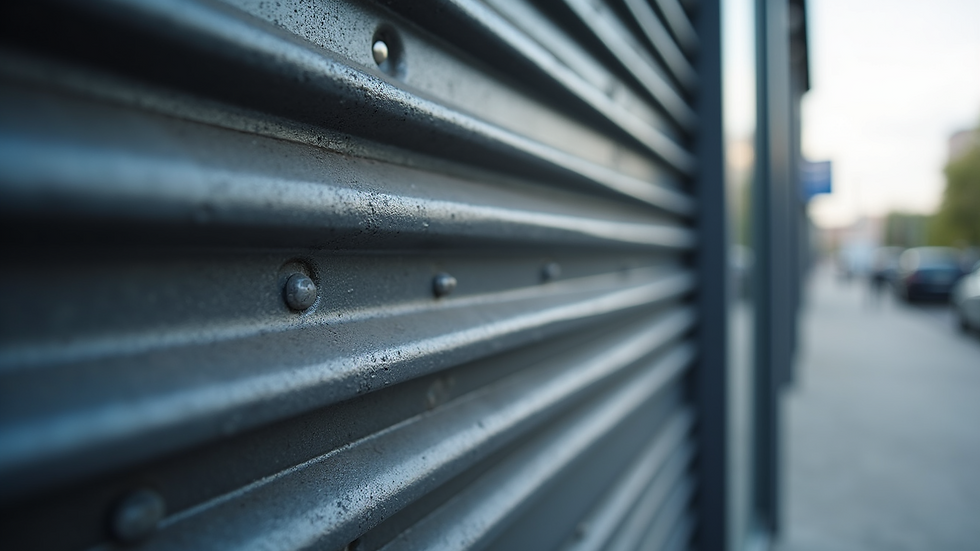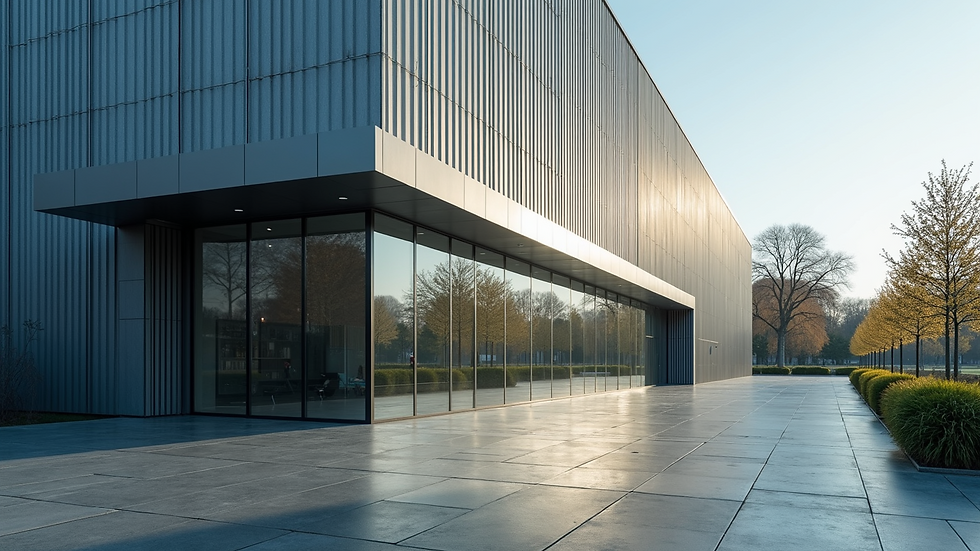Enhancing Buildings with Modern Architectural Facades
- Wintur
- Aug 26
- 4 min read
When it comes to transforming the look and feel of a building, the facade plays a crucial role. It’s the first thing people notice, and it sets the tone for the entire structure. Over the years, architectural facades have evolved dramatically, blending aesthetics with functionality. Today, I want to share some practical insights and modern facade design tips that can help you elevate any building project, whether residential or commercial.
Why Facades Matter More Than Ever
A building’s facade is more than just a pretty face. It protects the interior from weather, controls energy efficiency, and even influences the mood of those inside. With advancements in materials and technology, facades have become dynamic elements that can adapt to environmental conditions while maintaining a sleek, modern look.
For example, aluminum windows and doors have become a popular choice for facades because they offer durability, low maintenance, and excellent thermal performance. These features are especially important in climates like Toronto’s, where seasonal changes demand reliable insulation and weather resistance.
By focusing on the facade, you’re not just improving curb appeal—you’re enhancing the building’s overall performance and value.

Modern Facade Design Tips for a Stunning Look
If you’re aiming to create a facade that stands out, here are some modern facade design tips that I’ve found effective:
Choose the Right Materials
Materials define the character of your facade. Aluminum, glass, wood, and stone are popular choices. Aluminum, in particular, offers a sleek, contemporary look and pairs well with large glass panels for natural light.
Play with Texture and Depth
Flat surfaces can feel dull. Adding texture through cladding, panels, or even patterned metal sheets creates visual interest. Depth can be introduced by layering materials or using protruding elements like sunshades or louvers.
Incorporate Energy Efficiency
Facades should help regulate temperature. Consider double or triple-glazed windows, insulated panels, and shading devices. These features reduce energy costs and improve comfort.
Use Color Strategically
Neutral tones like gray, black, and white are timeless, but don’t shy away from bold accents. A splash of color can highlight architectural features or entrances.
Integrate Technology
Smart facades with automated shading or ventilation systems are becoming more common. These innovations enhance comfort and reduce energy consumption.
Focus on Sustainability
Sustainable materials and designs that maximize natural light and ventilation contribute to greener buildings. Green walls or solar panels can also be integrated into the facade.
By combining these tips, you can create a facade that is not only beautiful but also functional and future-proof.

What is Current Modern Architecture Called?
You might wonder what the latest trends in architecture are called. The current wave is often referred to as Contemporary Architecture or Neo-Modernism. This style emphasizes simplicity, clean lines, and the use of new materials and technologies.
Contemporary architecture often features:
Open floor plans and large windows
Integration with the environment
Minimalist aesthetics with functional design
Use of sustainable and innovative materials
This approach contrasts with traditional styles by focusing on adaptability and efficiency. It’s no surprise that many buildings today showcase these principles through their facades, blending form and function seamlessly.
How to Choose the Best Facade Solutions for Your Project
Selecting the right facade solution depends on several factors. Here’s a step-by-step approach I recommend:
Assess the Building’s Purpose
Residential buildings might prioritize privacy and warmth, while commercial spaces often focus on visibility and branding.
Consider the Climate
In colder regions, insulation and airtightness are critical. In warmer climates, shading and ventilation take precedence.
Evaluate Budget and Maintenance
Some materials require more upkeep than others. Aluminum, for example, is low maintenance and long-lasting, making it a smart investment.
Think About Aesthetics
The facade should complement the building’s style and surroundings. Look at local architecture for inspiration.
Consult with Experts
Working with architects and contractors who understand the latest facade technologies ensures you get the best results.
Explore Customization Options
Many manufacturers offer customizable windows and doors that can match your design vision perfectly.
By following these steps, you can narrow down your options and select facade elements that meet your needs and enhance the building’s appeal.

Bringing It All Together with Modern Architectural Facades
When you combine thoughtful design, quality materials, and smart technology, you get modern architectural facades that truly transform buildings. These facades don’t just look good—they perform well, offering energy efficiency, durability, and style.
For anyone involved in building projects, investing in premium aluminum windows and doors is a game-changer. They provide a clean, modern aesthetic while meeting the demands of today’s energy codes and comfort standards.
If you’re ready to enhance your building’s facade, consider partnering with suppliers who specialize in high-performance solutions. This ensures your project benefits from the latest innovations and expert craftsmanship.
Next Steps for Your Facade Project
Now that you have a solid understanding of modern facade design, it’s time to take action:
Start with a clear vision of what you want your building to express.
Research materials and technologies that fit your climate and budget.
Reach out to professionals who can guide you through design and installation.
Prioritize energy efficiency to save costs and reduce environmental impact.
Don’t forget maintenance—choose materials that will stand the test of time.
By following these steps, you’ll create a facade that not only enhances your building’s appearance but also adds lasting value.
Remember, the facade is your building’s handshake with the world. Make it firm, confident, and inviting.



Comments